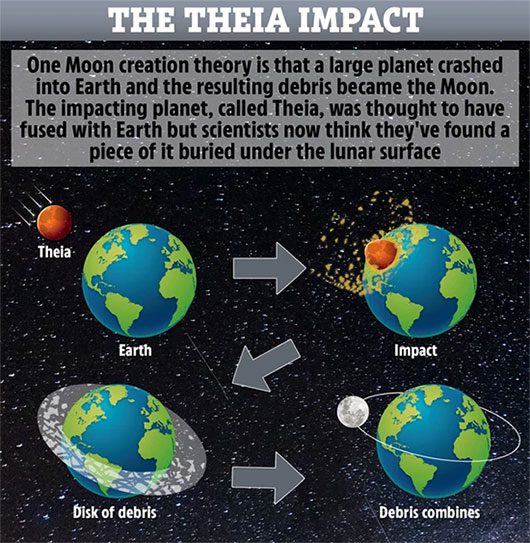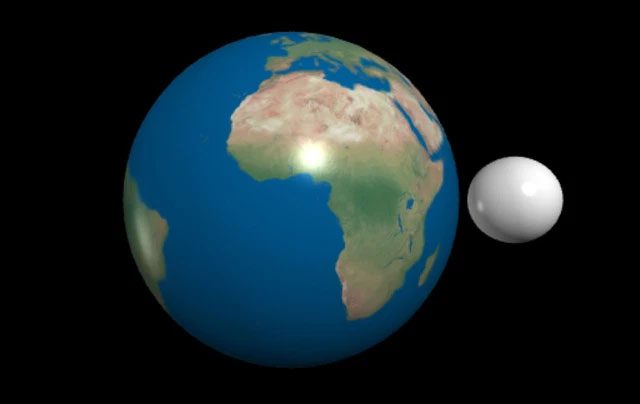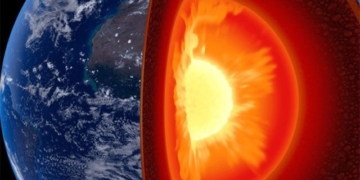It has been some time since Roland Emmerich’s film Moonfall was released, and its plot has left many wondering whether the moon could collide with Earth. According to the film’s official IMDb page, “a mysterious force knocks the moon out of its orbit,” sending it hurtling towards Earth. To understand what this mysterious force might be, we should first delve into other questions and learn about the origins of our natural satellite.
The Formation of the Moon
The moon has been Earth’s close companion for billions of years. According to a widely accepted hypothesis by NASA, the moon is believed to have formed from debris ejected into space after a massive collision between Earth and a smaller planet, the hypothetical planet named Theia. Another hypothesis suggests that both the moon and Earth formed after the collision of two celestial bodies the size of five Mars.

Theia is the name given to a hypothetical planet that, according to the giant impact hypothesis of the moon’s formation, collided with Earth around 4 billion years ago. This collision, occurring at a grazing angle, was sufficient to destroy Theia, with its iron core buried within primitive Earth. A significant amount of material was ejected and entered orbit around Earth, leading to the formation of the moon. Earth also gained a considerable amount of angular momentum from this impact, increasing its total mass to the level we see today.
The Distance Between the Moon and Earth
The moon orbits our planet at an average distance of about 385,000 km, with an estimated mass of over 81 million tons. It is about one-quarter the size of Earth, according to Paul Chodas, manager of the Near-Earth Object Studies (CNEOS) at NASA’s Jet Propulsion Laboratory in Pasadena, California.
Could the Moon Collide with Earth?
As mentioned earlier, “a mysterious force knocks the moon out of its orbit,” causing it to plummet towards Earth. In practical terms, this mysterious force could arise from collisions between the moon and asteroids or comets.
The likelihood of this happening is very slim, if not negligible. This is because the moon is much smaller than Earth, and consequently, its gravitational pull is also much weaker. Earth’s gravity will attract asteroids, comets, or any other objects towards itself.

According to previous astronomical studies, most large moons never collide with the planets they orbit. This is related to how large moons are formed. Most begin as debris rings orbiting a planet. If their orbit is too slow and decays, the debris will eventually fall into the planet over time. This is what is currently happening with the rings around Saturn. However, if the ring’s orbital speed is fast enough to push all debris away from the planet, the debris will coalesce due to gravity and eventually form a moon. When this occurs, the newly formed moon will have an orbit fast enough to gradually move away from the planet. This is what is happening with our moon. It is slowly moving away from Earth at a rate of about 1.48 inches (nearly 4 cm) per year.
CNEOS at NASA identifies and tracks near-Earth objects (NEOs), such as asteroids and comets, to monitor whether they pose a threat to Earth, the moon, or our neighboring planets in the universe. Currently, CNEOS has tracked about 28,000 NEOs approaching Earth within 1.3 astronomical units (194.5 million km). Fortunately, there are no recorded collisions with any planets, asteroids, or other NEOs.
NASA states that a NEO that could genuinely threaten Earth must have a diameter of at least 140 meters. An object that could collide with and move the moon out of its orbit towards Earth, according to NASA, would have to be “almost as large as the moon itself.” However, to date, NASA’s observations have found no large wandering asteroids of such size recorded in the solar system – the largest known asteroid is about 70 times smaller than the moon and orbits at a distance of approximately 180 million km from Earth.

In fact, the moon is not a primordial object. According to NASA, the moon is “an evolved planet,” with an internal structure similar to Earth, featuring a thick crust and a partially liquid interior. After analyzing data from moonquakes, scientists have discovered that part of its seismic activity stems from the contraction of the moon’s crust due to the cooling temperature within. This has caused the moon to shrink by about 45 meters over the past few hundred million years.


















































